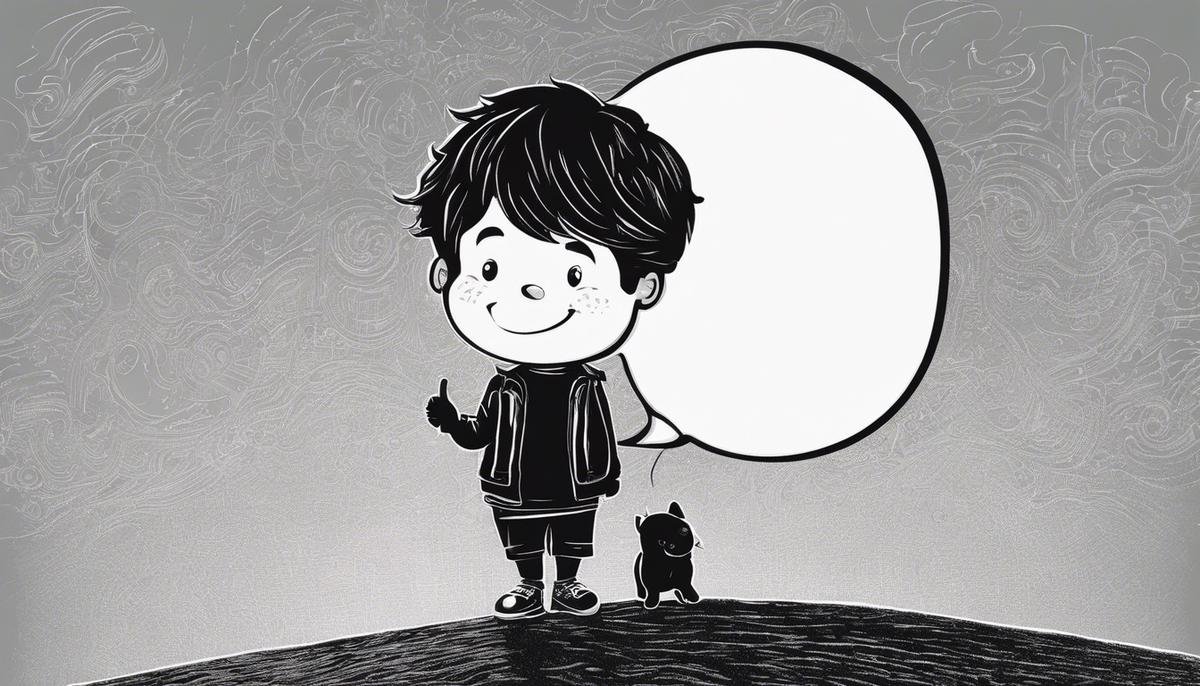
Aggression in children with Autism Spectrum Disorder (ASD) is a complex issue that extends beyond the children themselves, posing significant challenges for their parents, educators, and family. Our examination delves into the many facets of this behavior, exploring its triggers, manifestations, and long-lasting effects. Through the lens of research, psychological studies, and real-life anecdotes, we intend to shed light on this often misunderstood area of ASD. The subsequent sections provide a range of promising strategies and therapies to manage and mitigate aggressive behavior, empowering those involved with effective tools and insights.
Understanding aggression in ASD kids
Title: Exploring Aggression in Children with Autism: A Path to Understanding and Solutions
When it comes to our children, their well-being and happiness are our highest priority. For parents of children with Autism Spectrum Disorder (ASD), this can be especially challenging due to a range of atypical behaviors that frequently accompany this condition. One such behavior, aggression, can be confusing and emotionally draining for families. However, a deeper understanding of this behavior can pave the way for effective solutions, enhancing harmony within the entire family.
Children with ASD don’t necessarily have a higher level of aggression than their peers. However, their aggression often tends to be more intense and can manifest in a variety of ways — be it verbal, physical, self-directed, or aimed towards others. To address this, it’s critical to understand that aggression in children with ASD is often a form of communication.
Just like anyone else, children with ASD have needs and wants. However, with ASD often comes difficulty in verbal communication. The frustration from not being able to effectively express themselves can result in displays of aggressive behavior. Recognizing these acts of aggression as cries for help can be a significant breakthrough in managing them.
It’s essential to remember that children with ASD are extremely sensitive to their environments. Too much sensory input, like bright lights or loud noise, can make them uncomfortable, leading to aggressive behavior in an effort to communicate their discomfort. So, being aware of their environmental triggers can go a long way in minimizing aggressive incidents.
Now, understanding the ‘why’ behind aggression in children with ASD is only half the battle. The other half lies in finding solutions. Behavior therapy is a popular and effective approach taken by professionals to address aggression. This involves identifying triggers, teaching coping skills, and reinforcing positive behavior using rewards. Involvement in therapy can teach a child how to express their needs more appropriately, thus reducing aggressive behavior.
Additionally, creating a safe and accommodating home environment can do wonders. This could involve setting up ‘calm zones’ in the house, where the child can feel safe and relax, or redesigning rooms to eliminate sensory stimuli that cause discomfort. Consistent routines, predictability, and clear instructions also bring a sense of order and help in managing challenging behaviors.
Last but not least, it’s important to not overlook the power of emotional support. As parents, seeing children in distress can be heart-wrenching. However, offering them unconditional love and a safe space to express their feelings can stimulate emotional growth, making aggressive behaviors less frequent.
Understanding aggression in children with ASD is not just about finding ways to manage their behavior. It’s about creating a world where they feel heard, understood, and loved. By embracing this approach, every challenge comes with a solution, bringing one step closer to building a happier home.

Parenting Strategies to address ASD aggression
When it comes to managing and mitigating aggressive behavior in children with ASD, effective parental strategies are crucial. It’s essential to remember that each child is unique and will respond differently to various behavioral management methods. However, implementing some proven strategies can equip parents with the necessary tools and tactics to help manage their child’s aggressive tendencies.
Firstly, implementing positive reinforcement can drastically reduce instances of aggression. This entails acknowledging and rewarding good behavior while ignoring unwanted behavior. When children with ASD feel positively validated for their good acts, they’re likelier to repeat them. Everyone appreciates a pat on the back, and for children, that can come in the form of praise, treats, or tokens.
Another effective trick to tackle aggression is through distraction and redirection strategies. If one recognizes a situation that is likely to lead to aggressive behavior, quickly diverting the child’s attention towards something else can help prevent an outburst.
Physical activities are also quite beneficial. There’s overwhelming evidence that regular physical activity has a profound impact on reducing aggression. Activities such as swimming, cycling, or even a brisk walk can help channel energy positively, resulting in a less frustrated, more relaxed child.
Visual aids play an essential role in dealing with ASD-related aggression. Children on the spectrum might struggle to verbally express their needs and emotions, leading to aggressive behavior. Visual cues, like charts or drawings, can better aid in understanding and expressing feelings, reducing the possibility for frustration and aggression.
Next, consider the value of developing a sensory diet. A “sensory diet” (a term coined by OT Patricia Wilbarger) involves specific activities and accommodations tailored to a child’s unique sensory needs. It could include personal space tools, deep pressure massage, or fidget tools, among others. By addressing sensory needs, one can significantly decrease the chances of aggressive behaviors spurred by sensory overload.
Equipping children with problem-solving skills can also curtail aggression. Guiding them to identify the problem, generate solutions, choose one, and evaluate its effectiveness enables them to cope in stressful situations. This strategy empowers children with ASD to manage their emotions better.
Finally, remember the strength of parental modeling. Children learn by watching the actions of those around them. Therefore, exhibiting patience, practicing active listening, and responding calmly in stressful situations serves as a valuable lesson for children with ASD about appropriate responses.
Parents are a child’s first and most influential teachers. Armed with these strategies, parents can turn every disruptive incident into a teachable moment, leading to a more harmonious home environment for children with ASD.

Role of Therapy in managing ASD aggression
Article Title: The Positive Impact of Therapy on Aggressive Behavior Management in Children with ASD
Seeking ways to manage aggressive behavior in children with Autism Spectrum Disorder (ASD) is a challenging journey many parents embark on. A strong ally in this journey could be therapy, which plays a pivotal role in managing such behaviors. Further down the line, you’ll uncover how different therapies can significantly improve a child’s ability to manage aggression, thus promoting a harmonious family life.
Positive reinforcement is a strategy parents might already use in day-to-day parenting. Classic behaviorism principles suggest that rewarding desired behavior increases its occurrence. For a child with ASD, tokens, rewards, or praise for non-aggressive behavior can prove very advantageous. This approach underpins a variety of therapies, including Applied Behavior Analysis (ABA). Although not without its critics, many parents and practitioners find ABA effective in managing negative behaviors in children with ASD.
Distraction and redirection strategies are another powerful tool at a parent’s disposal. Techniques like switching focus to a new activity, using a familiar item to redirect the attention, or introducing a calming activity like deep breathing or listening to soothing music can effectively divert aggressive behaviors. Occupational therapists often teach these skills to children with ASD to help them control their emotional responses.
Physical activities are invaluable for all children, but they can be especially therapeutic for those with ASD. Structured exercises, like swimming, yoga, or simply playing in the park, can act as outlets for energy, reduce anxiety, and help manage aggression. A therapist specialized in physical therapy can provide appropriate exercises tailored to your child’s needs.
Visual aids can be incredibly helpful for children with ASD who may struggle with verbal communication or understanding complex instructions. Visual daily schedules or social stories can reduce anxiety around change and transition, thus minimizing triggers for aggressive behavior. Speech and language therapists may offer guidance on using visual aids effectively.
Creating a sensory diet, a tailor-made plan that includes a range of sensory-rich activities, may help to regulate a child’s sensory reactions, lessening aggressive behaviors. A sensory diet might include weighted blankets, sensory toys, calming music, or specific tasting snacks, and an occupational therapist can design an effective sensory diet to meet your child’s specific needs.
Teaching problem-solving skills is an important step in managing aggression. Cognitive Behavioral Therapy (CBT) helps children recognize and change thought patterns leading to negative behaviors. Through CBT, a child with ASD can learn to identify issues and develop suitable responses, mitigating the onset of aggressive behaviors.
Parental modeling also matters. Children often imitate adults, and consistently modeling calm and composed behavior can influence a child with ASD. Family therapists can provide parents with the tools and strategies needed to navigate the complexities of raising a child with ASD displaying aggressive behaviors.
Therapy, indeed, can play a critical role in managing aggressive behavior in children with ASD. Incorporating these techniques leans towards creating a peaceful environment for the child and everyone involved. It’s all about nurturing by understanding, one day at a time.

Supporting an aggressive ASD child in school
No one knows our children better than we do as parents.
So, when behavior in the classroom becomes challenging, it’s essential that schools partner with us to foster a positive environment for children with Autism Spectrum Disorder (ASD), especially for those exhibiting aggressive behavior.
Creating an understanding and accommodating atmosphere in schools aligns perfectly with efforts at home, and when parents and teachers unite in this endeavor, we can make meaningful strides towards managing aggression.
So, how can schools contribute to this journey, you might ask?
Firstly, schools need to be aware that every child with ASD is unique. There’s no one-size-fits-all approach. It demands customized strategies based on each child’s needs, interests, and potential triggers. Regular communication between teachers and parents provides a meaningful loop of feedback that facilitates tailoring such strategies.
Incorporation of active learning strategies in the curriculum is vital. This can include sensory activities that engage students in a hands-on way or even simple physical activities like stretching, jumping jacks or even yoga. These softer, proactive measures can help reduce the onset of aggressive behavior by assisting children with ASD to process their sensory information better.
Additionally, schools should invest in training their staff in therapies like Applied Behavior Analysis (ABA) and Cognitive Behavioral Therapy (CBT). These therapeutic approaches can enhance a child’s communication skills, decrease problematic behaviors and improve social and learning abilities. ABA therapy, for instance, is known to be highly effective in supporting children with ASD and can be integrated within lesson plans and routines at school. Meanwhile, CBT can assist children in better understanding their feelings, thoughts, and responses, thus, reducing aggressive behaviors.
Visual aids, such as charts, graphs, or even flashcards can be great tools to foster understanding. Schools can use these simple tools to support communication and comprehension for children with ASD, thus reducing frustration and associated aggressive behavior.
There’s also the concept of a ‘sensory diet’, a term often used by occupational therapists. This involves creating a series of physical activities and accommodations that meet a child’s specific sensory needs. For example, a sensory diet for a child who is overly sensitive to auditory stimuli could include access to a quiet, designated ‘quiet zone’ during the school day.
Moreover, schools should encourage the teaching of problem-solving skills. By doing so, they’ll equip children with ASD with an essential tool to handle challenging situations, thereby minimizing disruptive behavior.
Lastly, but most importantly, schools should create an environment that emphasizes positive reinforcement. Recognizing and rewarding desirable behavior is a powerful motivator. It encourages repetition of such behavior and is a direct way of telling children, “You’re doing great!”. In this way, challenging behaviors like aggression can be gradually minimized.
To wrap things up, supporting children with ASD exhibiting aggressive behavior is a joint responsibility that should involve schools, parents and healthcare providers. Incorporating adaptable strategies within school activities, investing in suitable therapies, and maintaining an open channel of communication with parents shall go a long way in fostering a positive environment for these kids. With consistency and understanding, dealing with aggression in children with ASD can become a manageable journey, leading to happier and more engaging school days for them.

Coping mechanisms for families dealing with ASD aggression
Getting the whole family involved in managing the aggression associated with Autism Spectrum Disorder (ASD) creates a supportive network for the child and provides the foundation for building better coping mechanisms for the whole family. Here’s how:
- Family Education and Training: Equip every family member with knowledge about ASD and how it manifests in aggressive behaviors. Attend workshops, read books, or join online communities that educate and provide supporting strategies. Understanding helps to empathize, reducing frustration and facilitating better responses to aggression.
- Group Therapy: Include the entire family in therapy sessions, when suitable. Not only does this show the child that they’re not alone, but it also helps family members understand how to react in tense situations constructively, deflecting outbursts or mitigating their effects.
Beyond managing aggression, families need to establish effective coping mechanisms. These may include:
- Self-Care: It can be physically, mentally and emotionally exhausting to manage aggressive behaviors, so it’s crucial for everyone to prioritize self-care. Exercise, get quality sleep, and make time for hobbies or activities that rejuvenate the spirit.
- Communication Channels: Foster open discussions about emotions and challenges. Sharing experiences encourages empathy, builds stronger bonds, and allows the family to troubleshoot solutions together.
- External Support: Connect with other families dealing with similar issues for shared experiences, advice, and support. Peer groups, support forums, and community events can lessen feelings of isolation and boost morale.
- Recognize Progress: Celebrate small wins, whether it’s a peaceful resolution to a conflict or a day without an aggressor incident. Positivity reinforces progress and bolsters everyone’s motivation to keep striving for improvement.
Remember, patience, understanding, and adaptability are fundamental in managing ASD aggression. A cohesive family working together can significantly improve the environment and quality of life for a child with ASD, making the home a safe, secure, and happy space for everyone involved.

Managing aggressive behavior in children with ASD is a shared effort, requiring the participation and resilience of not only the child but also parents, educators, and the entire family system. Strategies for fostering calming environments, both at home and school, are key to supporting the child’s growth and progress. Equally important is the self-care of those involved, ensuring their mental health and wellbeing. Although the road to this understanding and transformation is challenging, the outcome of a nurtured and understood child far outweighs the hurdles that lie in the path. These measures form a comprehensive and inclusive approach to managing aggression in ASD children, enhancing their quality of life and ensuring a brighter, more fulfilling future.




